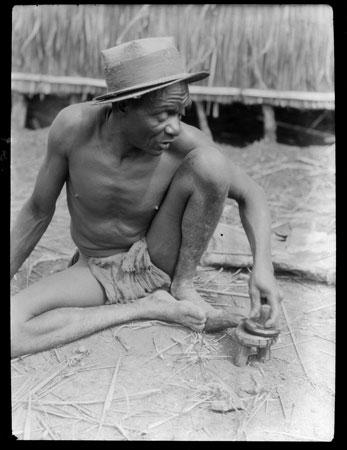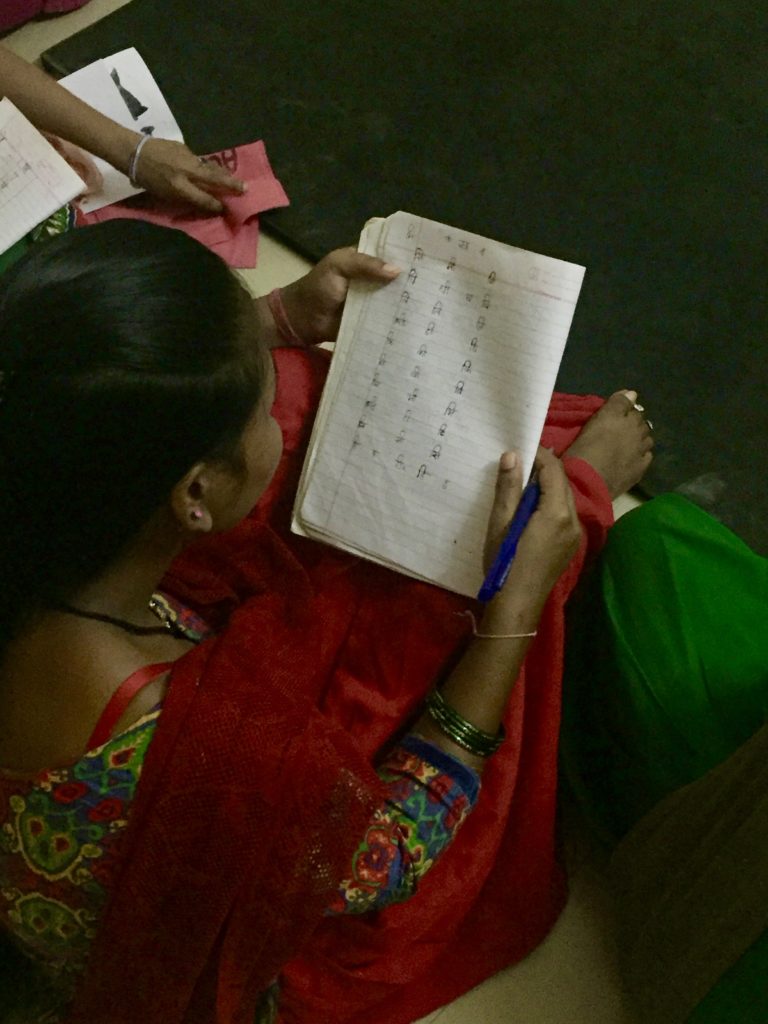In the late 1920s, a young boy was walking on a bush path in North Central Africa, when he hit his foot on a small wood stump and sustained an injury. The cut on his foot became hard to cover, and soon began to fester, which caused him much pain and inconvenience. Being a member of the Azande tribe, a people of the upper Nile, the boy instinctively attributed this incident to the nefarious practice of witchcraft.
“Witchcraft (amongst the Azande) is ubiquitous,” writes E. E. Evans-Pritchard, in his book Witchcraft, Oracles and Magic among the Azande(1936). The author, an English anthropologist living with and studying the cultural practices of the Azande at the time, criticised the boy’s statement, when he reported the incident to him, arguing that he had knocked his foot on the stump because of his own carelessness. “…witchcraft had not placed it (the stump) in the path, for it had grown there naturally,” he told the boy. The young native, however, responded by pointing to the uniqueness of the situation.Of course, the witch had not placed the stump in his path, but that did not mean witchcraft wasn’t involved in the larger series of events that took place.The boy had crossed that same bush path many times before, and had always kept his eyes out for stumps, like the Azande habitually do. Why then had he missed the stump of wood this time? Moreover, he had suffered numerous wounds before, and all of them had closed and healed quickly. Why then had this cut remained open for so long and festered? Surely the boy had to have been bewitched!
Evans-Pritchard recorded many such conversations and observations during his time with the Azande, that led him to conclude,“…that witchcraft has its own logic, its own rules of thought, and that these do not exclude natural causation. Belief in witchcraft is quite consistent with human responsibility and a rational appreciation of nature.”1

Evans-Pritchard’s emphasis on the co-existence of Azande thought with the laws of nature is prominent here. At the time of writing this book, the dominant discourse in Europe was based on the belief in the linearity of evolution –that the European man’s mind was superior to its ‘primeval’ counterpart as it understood the laws of nature through scientific thought. Before Evans-Pritchard’s account, most other records of ‘primitive’ societies and cultures were presented by missionaries and other travellers, who, according to Evans-Pritchard, weren’t trained to present a nuanced, non-exotic version of events. He claimed that such accounts tended to focus on the peculiar rather than the commonplace, painting a picture that was embedded with the conceptions and ideals of the untrained observers. Even as Evans-Pritchard’s own work was later criticised for using the metric of ‘scientific’ and ‘rational’ thought to qualify the Azande mind, we have to acknowledge and appreciate the ground-breaking ideas he presented, by characterising ‘primitive’ thought as consistent with rationality. Later, the ideas and empirical evidence provided by him helped develop the idea of multiple rationalities –that there is more than one valid way of thinking, depending on the context in which it occurs.
When I first read his work, I was baffled that an Englishman from a century ago was able to approach and understand ‘superstitious’ practices with such openness and insight, when most people around me would still consider any way of thinking other than their own less valid/rational/refined. How is it, that ideas that were debated and accepted a century ago still sound trailblazing today? Why have we not accepted or expanded on them, not just in niche academic circles, but also in the larger society?
I was recently a part of an adult literacy and life skills project in Delhi, called Indigo Lingo, that was run by LILA Foundation for Translocal Initiatives between April 2017-April 2018. As part of this project, I met with women who work as domestic helps in Delhi once every week to discuss themes and issues that they wanted guidance on –such as basic banking activities, information about financial savings schemes, operating an ATM machines, etc.The yearlong sessions began after the demonetisation drive, which had left most of the participants feeling lost as they encountered the new financial system. Therefore, the first few months of the project saw high turnout and participation from the women, who stood to gain immediate knowledge concerning money management from it. However, as we started moving towards working on their literacy skills that would help them apply the newly gained information –such as filling forms at the bank, reading instructions on an ATM machine –they tended to become disinterested.
“Hum kya karenge padhna-likhna seekhke? Ab toh hamare bachhe padh likh kar aage badhenge. Humara time nahi hai yeh sab karne ka.” (What will we achieve by learning to read and write? Now is the time for our children to study and prosper in life. Our time to do that is over). These were the most common responses we got when trying to understand why this was happening.
A closer look at their lives revealed that they were all living hand-to-mouth; most had abusive husbands or families who would not let them develop a sense of self-esteem; and worst of all, there was a sense of camaraderie in tragedy –they did not want to see the other women build better lives if they couldn’t have it themselves. It seemed that the comments they had made earlier came from a belief in the inferiority of their lives, while at the same time a complacency that disallowed them from seeking a better one. It wasn’t just the privileged and ‘rational’ people who thought these women could not do well by expanding their minds, the women themselves believed it too.
There were however six women who stood out in this crowd. These women saw the merit in spending an hour a week learning to write ka, kha, ga(the letters of the Hindi alphabet), or calculating basic arithmetic problems, and therefore continued to attend the sessions regularly despite taunts and name-calling from their neighbours.
This again made me wonder, what was it about these six individuals that made them open themselves to new ideas and learning, while the others didn’t? Then I got a call from one of them, months after the sessions had ended, that helped me get an insight into my conundrum.

Pooja, one of the participants who had moved to Punjab since the programme concluded, called me a few days before Christmas this year to catch-up and find out how things were at my end. We had grown close over the course of the programme and had discussed various intimate details of her life. As she was telling me about the latest in Punjab, a time and place she wasn’t enjoying, she said, “kaash class khatam nahi hui hoti”(I wish the classes hadn’t ended). She elaborated saying that participating in a literacy programme was the first time that she felt like she was truly opening up, not just to learn, but also as a person. Pooja was (and possibly again goes back to being) a timid person. Abused as a child by her father, and later by her husband, she never learnt to live without fear or think for herself. However, she claimed that the seemingly unrelated practice of learning to read and write had opened up her mind to understanding her own self, her potential, and hence her self-worth. She began to speak out, participate in the sessions more intently, and also, for the first time, began to take decisions for herself.
(However, during my last conversation with her, it seemed like living with her husband’s family in Punjab, she was going back into her safety cocoon).
There is a scientific explanation for why certain women, specifically those who engaged sincerely in the learning process, responded differently to the sessions. And
Coming back to the question of open and close-minded individuals then, it seems that such a characteristic is more an acquired than an inherent trait. The more an individual uses their mind, the more it grows. And if they stop using it, it retracts to its dormant self. While theories of equality amongst races (castes, class, sex, etc.) have long been established, we still see today people denying the growth of the mind to individuals historically considered lower in the rung, through both individualistic and structural constraints.
This is not to say that the women who did not believe they would benefit from becoming literate should be forced to learn to read and write. But if they don’t receive or find any avenue for growth or active application of their mind at all, then we are doomed to see a large part of the demography convert itself into a liability.
This concern becomes graver when we realise two other circumstances that tend to pair with it. On the one hand, learning, research, thought and study for the sake of curiosity and developing the mind are fervently looked down upon, at least in contemporary India. While recent steps such as cutting the number of PhD seats and academic journals available in educational institutions in India demonstrate a dangerous disregard for these practices, we also see a simultaneous push for the development of mechanical skills amongst the youth of the country. In the trade off between becoming economically productive and intellectually starved, we are setting ourselves up on a rocky, hollow foundation for the future. This does not mean that we put down anything that does not engage with or maintain continuity with the historical development of thought. Of course the society needs a skilled workforce, a market and a pragmatic system that keeps the wheels running. However, we cannot afford to do this at the cost of losing the intellectuals, the poets and the artists. Nurturing a diverse set of minds is the only way that will ensure the creation of a society worth being a part of. One where new ideas are constantly discovered and minds continuously expand.
The need today is to realise and demand this necessity, so the world can enjoy the pleasures and fruits of creativity. It is upon us to demand this, not only of society, but also of ourselves, everyday. With the information overload and content flooding our lives through digital gadgets in this age, it is our responsibility to take charge of our mind, nourish it with thought, and create a space that allows for this thought to connect with the world and prove its worth.
1.Witchcraft, Oracles and Magic among the Azande(1936)
2. Lara Boyd on Neuroplasticity of the brain. TEDxVancouver-
https://www.youtube.com/watch?v=LNHBMFCzznE
